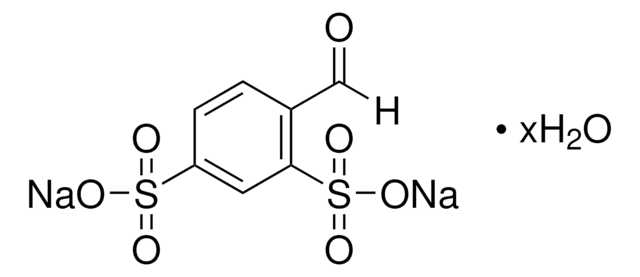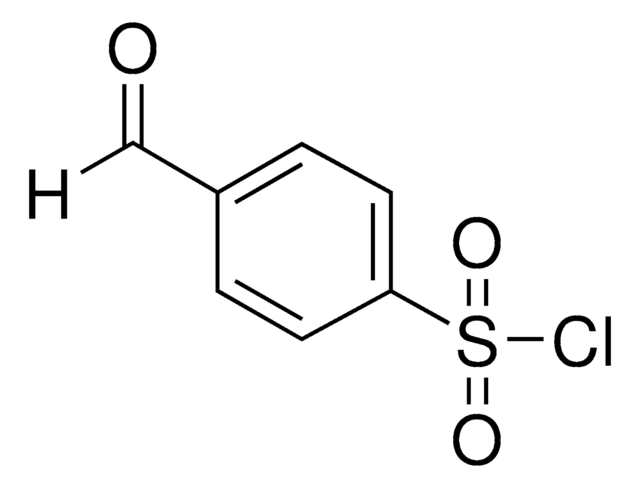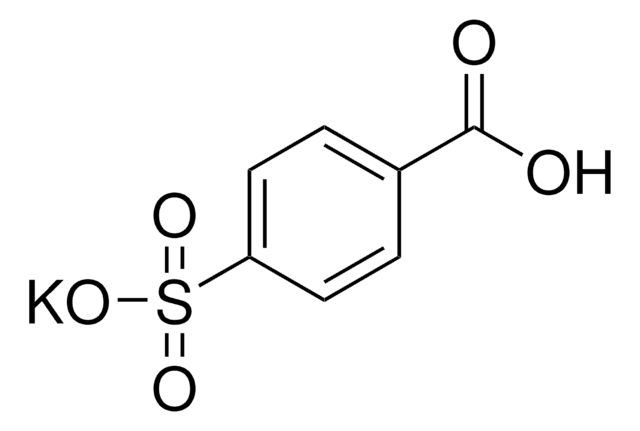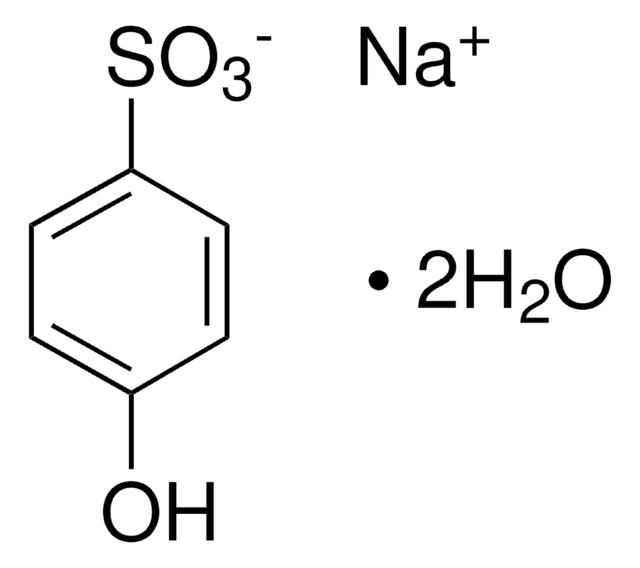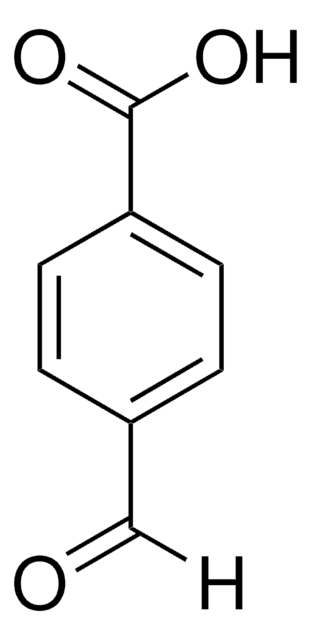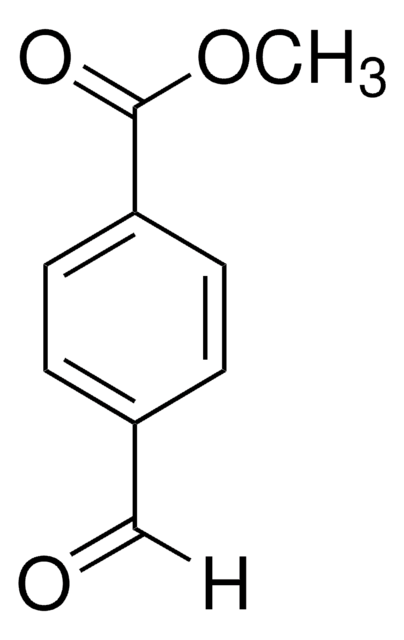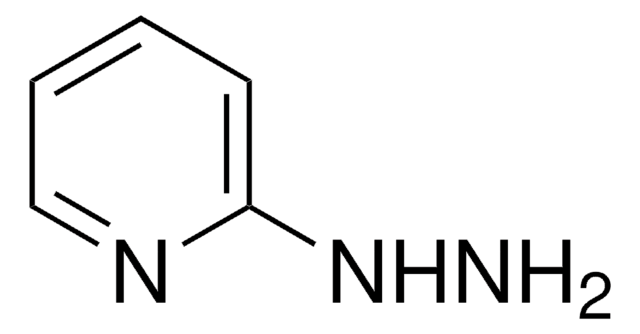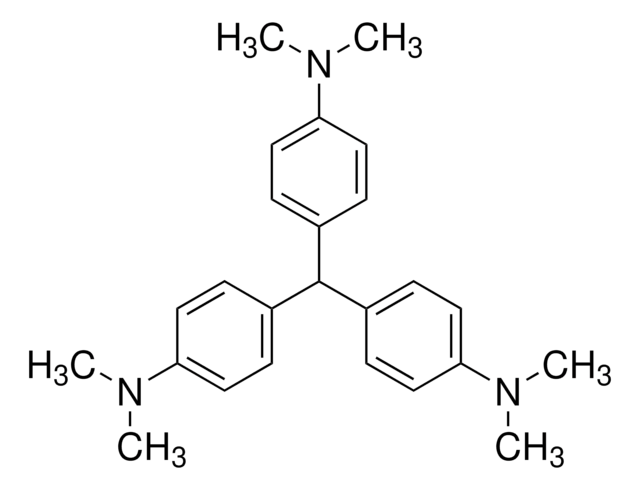12050
2-Formylbenzenesulfonic acid sodium salt
≥95.0% (T)
Synonym(s):
2-Sulfobenzaldehyde sodium salt, Benzaldehyde-2-sulfonic acid sodium salt, Sodium 2-formyl-benzolsulfonate
About This Item
Recommended Products
Quality Level
assay
≥95.0% (T)
form
solid
solubility
H2O: soluble 1 g/10 mL, clear, colorless to faintly brownish-yellow
functional group
aldehyde
sulfonic acid
SMILES string
[Na+].[O-]S(=O)(=O)c1ccccc1C=O
InChI
1S/C7H6O4S.Na/c8-5-6-3-1-2-4-7(6)12(9,10)11;/h1-5H,(H,9,10,11);/q;+1/p-1
InChI key
ADPUQRRLAAPXGT-UHFFFAOYSA-M
General description
Application
Storage Class
11 - Combustible Solids
wgk_germany
WGK 3
flash_point_f
Not applicable
flash_point_c
Not applicable
ppe
Eyeshields, Gloves, type N95 (US)
Choose from one of the most recent versions:
Already Own This Product?
Find documentation for the products that you have recently purchased in the Document Library.
Customers Also Viewed
Our team of scientists has experience in all areas of research including Life Science, Material Science, Chemical Synthesis, Chromatography, Analytical and many others.
Contact Technical Service
